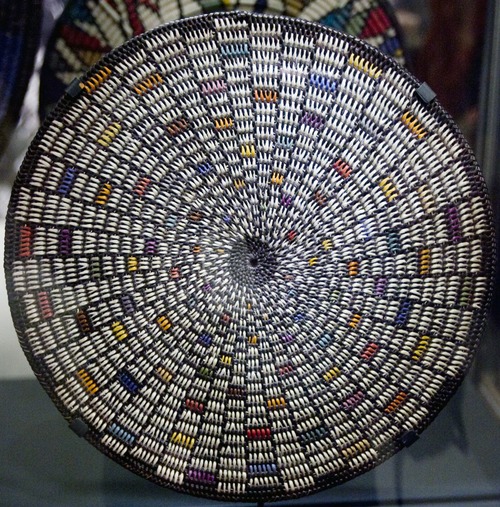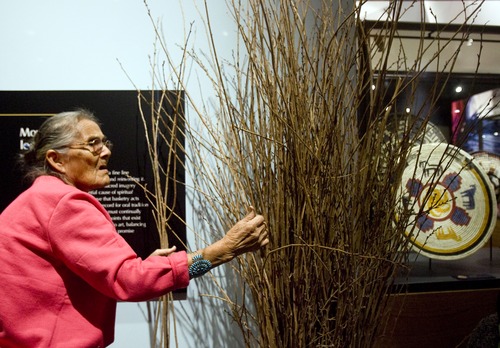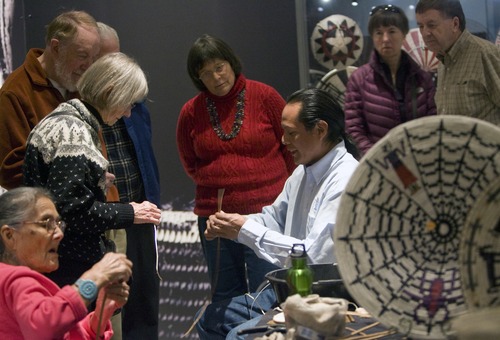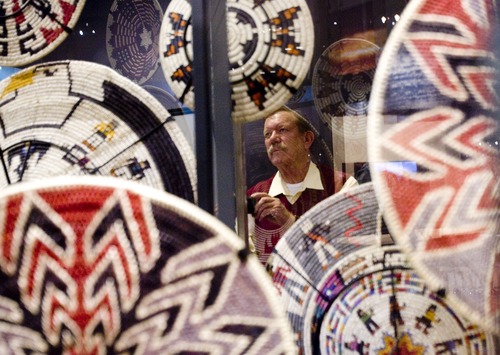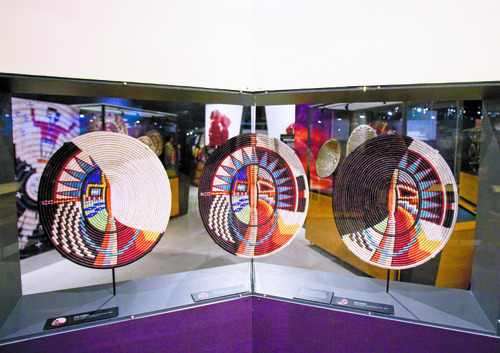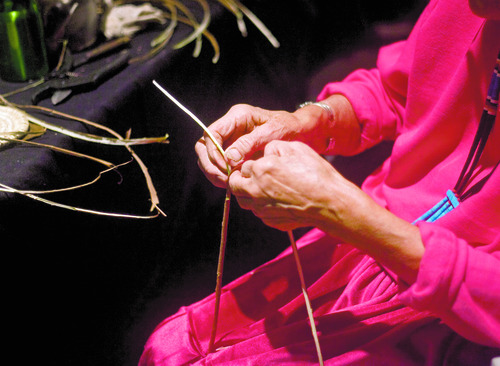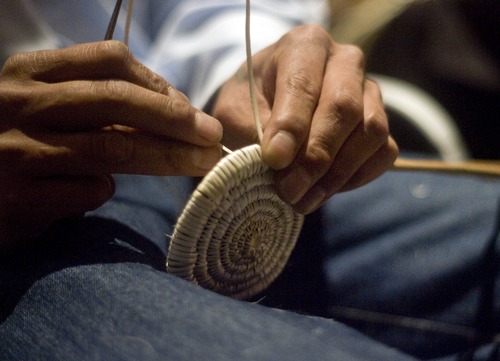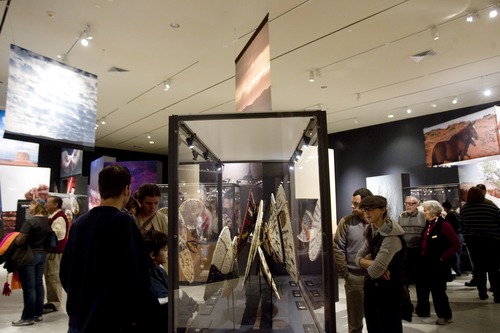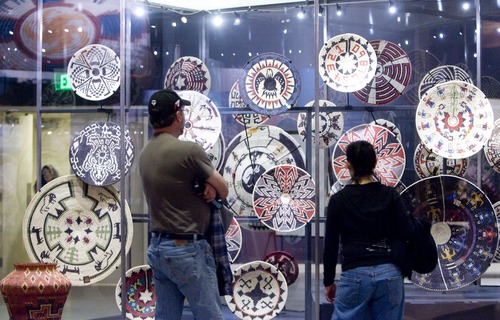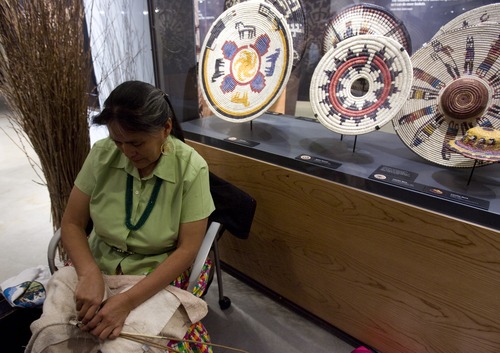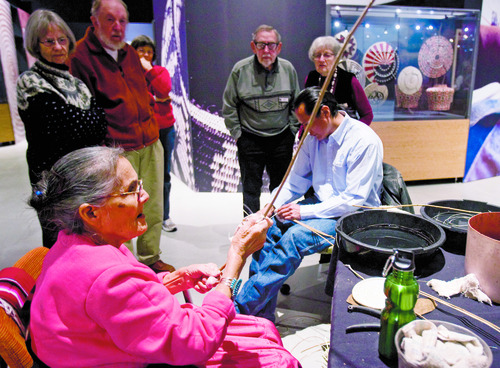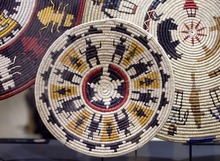This is an archived article that was published on sltrib.com in 2013, and information in the article may be outdated. It is provided only for personal research purposes and may not be reprinted.
Thigh-deep snow outside the Natural History Museum of Utah created a landscape far different than the tan- and rust-colored desert of Monument Valley.
But Mary Holiday Black, 77, a renowned Navajo basket weaver, couldn't be happier that she ventured north into the cold and snow of Salt Lake City and the museum on the city's east bench.
On Saturday and Sunday, Black and two of her daughters demonstrated basket weaving during the opening of the museum's first special exhibit, "Weaving a Revolution: A Celebration of Contemporary Navajo Baskets."
Black is the matriarch of a prominent basket-weaving family in the northern strip of the Navajo Reservation that is in Utah. She and her family are credited with turning an almost hidden craft into contemporary art that is in international demand.
About 150 baskets woven over three decades by 27 members of the Black, Bitsinnie, Rock and Johnson families are displayed at the museum along with pictures and videos of many of the artists. Once the show, the first major exhibit of Navajo baskets, closes on April 28, it will travel to other museums.
"I taught many of the weavers and now to see these — so beautiful," Black, who speaks Navajo, said through an interpreter. "I didn't know they would make it to this gallery."
Black was Utah's first recipient of the National Endowment for the Arts' National Heritage Fellowship in 1995.
Her daughter Lorraine Black said it was a shock to see so many baskets in one place. "It just blows my mind. … It's like a dream."
The amazing thing is that the Navajo baskets might have remained a private treasure, used in sacred ceremonies in Navajo homes and communities, but not shared with outsiders.
But beginning in the 1970s, Black and daughter Sally Black began a relationship with the Simpson family, which owns the Twin Rocks Trading Post in Bluff, Utah.
"No one ever knew Navajos wove baskets," says folklorist Carol Edison, who was with the Utah Arts Council for 30 years.
Only a few families, such as the Blacks, living on Douglas Mesa west of Mexican Hat, still wove baskets from the branches of the sumac tree.
With a template red, black and white design, they were used to celebrate a baby's first laugh, a wedding or other big events. And with so few of their own still weaving, many Navajos used baskets woven by White Mesa Utes or San Juan Paiutes, said Becky Menlove, director of exhibits at the museum.
The Simpsons began buying baskets, and in the same way that trading post operators influenced the designs employed by generations of Navajo rug weavers and sand painters, the Bluff family began suggesting new designs and colors.
They even hired a Navajo artist, Damian Jim, to help the growing circles of Navajo basket weavers conceive new ideas.
Today's baskets are often filled with dozens of vibrant colors, as many colors as Rit dye offers. Before using Rit, most weavers used plant dyes, Lorraine Black said.
The weavers start with a sumac branch not much thicker than a drinking straw. They strip the bark and then, using their teeth and hands, pull the branches into three pieces.
They use a knife to remove the soft pith at the center, and sometimes use holes poked in tin-can lids to shape each strip into a lace that can be dyed or left natural.
Using a bundle of sumac branches, they weave the basket in concentric circles from the center, using an awl to punch holes for the lace that is used to wrap the bundle, and alternating the lace colors to create a design.
It was the Simpson collection — those baskets the family did not sell — that the museum purchased for its collection, Menlove said.
"What they were doing was documenting what really is a revolution in basket-weaving," Menlove said. "Out of that traditional form has grown this explosion of new designs."
Taboos surrounded the use of ceremonial baskets, and some Navajos were wary of new designs and colors that would appeal to buyers.
But that went away over time, said Sally Black.
"At first they said, 'You're not supposed to do that!' but later they found there was a lot of money to be made," she said, laughing.
Edison, who saw her first Navajo baskets in a Blanding market in the mid-1990s, said they are a perfect example of contemporary folk art.
They help pass on the stories, such as those about creation or birth of the Milky Way, as well as more contemporary ones.
A number of the baskets tell about The Long Walk, when Navajos were forced by the U.S. Army to march to their five-year incarceration in New Mexico in 1864; another tells the story of Navajo Code Talkers who served the same U.S. Army in World War II.
"It's not only a beautiful art form, but teaches about Navajo culture," Edison said.
If you go
P "Weaving a Revolution," a special exhibit of Navajo basket weaving, will be on display at the Natural History Museum of Utah, 301 Wakara Way, Salt Lake City, through April 28.


